
Westworlds Secret Weapon Teases the Shows Gay Future
This article contains frank discussion of Westworld Season 2, Episode 5 “Akane No Mai.” If you haven..
This article contains frank discussion of Westworld Season 2, Episode 5 “Akane No Mai.” If you havent watched yet and dont know what happens with the gang visits Shogun World, now is the time to leave.
Unlike Westworlds surprise introduction of The Raj in Episode 3, this weeks journey into the Japanese-inspired Shogun World has been expected ever since samurai showed up in the Season 1 finale. But still, “Akane No Mai” had some unforeseen twists and turns including the notion that for all its geishas and ninjas, Shogun World is more similar to the dusty streets of Westworld than anyone might have expected. But carbon-copied Western plots and characters in “Akane No Mai” aside, Shogun World still managed to deliver up an incredibly faithful look at the Edo period of Japan. In a time where fans and critics are increasingly sensitive to cultural appropriation and Orientalism, Westworld could easily have missed the mark here.
Speaking with Vanity Fair for the latest installment of the Still Watching: Westworld podcast, actor Simon Quarterman—who plays the episodes de facto narrator Lee Sizemore—revealed that Japanese star Hiroyuki Sanada was the shows secret weapon when it came to keeping everything culturally accurate. Sanada came to set every day, even when he wasnt filming scene, to ensure the Japanese elements were correct. You can listen to Quartermans full interview here:
Sanada, who plays the ronin Musashi, spoke with Vanity Fair between a break in filming John Wick 3, about his time in Shogun World. He broke down the episodes painstaking attention to detail, the larger cultural meanings, and teased an unexpected gay romance that might be on the horizon. Here are some highlights from that conversation:
This Wasnt Sanadas First Rodeo: Sanadas face may be familiar to fans of both Eastern and Western cinema for his work in The Last Samurai, The Wolverine, Sunshine, Mahjong Hourouki, or even the TV show Lost. But Sanada has long been pulling double duty as both an actor and de facto cultural advisor. He stuck around Los Angeles when 2003s The Last Samurai was in post-production so he could help fix inaccuracies: “Im trying to introduce our culture to the world correctly, or more authentic, but I have always find out the best balance.” Audiences will be a seeing a lot more of him in the future in John Wick 3, Avengers 4, and some additional top-secret projects he could not discuss.
Musashi Is (Kind of) Based on a Real Figure: Miyamoto Musashi was a 16th/17th century swordsman and philosopher and while he gave his name to Sanadas character there, largely, the comparison ends. Sanada says he thought about adopting the real Musashis famous “pineapple” top knot but decided it was “too much” even for Westworld. Instead the actor tried to work in a dual weapon fighting style with both short and long swords where he could as an homage to the real Musashis “signature style.”
Some Inaccuracies You May Spot Are Intentional: “Its a theme park in the Westworld, created by Western people and we are playing robot samurai or geisha. So, where is the line of reality?” Sanada asks. Yes, he was on hand to fix tiny inaccuracies like, for example, the fold in an extras kimono or the angle of a sword. “Sometimes I switched the position of the props because its a very specific, important culture for my country. So, just slight changes.” But other inaccuracies stayed in for the sake of the story. Because Sanadas Musashi is meant to be a double for Rodrigo Santoros Hector, the ronins kimono was lined with culturally inappropriate black leather in order to mimic the Western gunslingers costume.
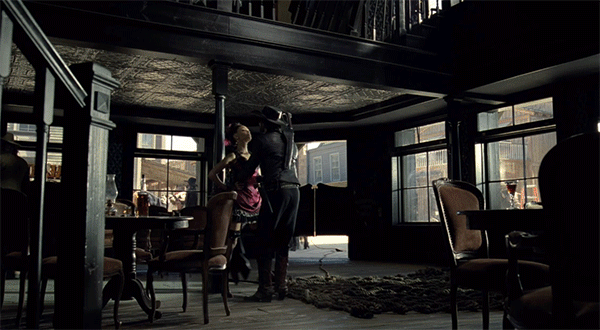
Yes, Sanada Re-watched the Heist from Season 1: The episode made no attempt to hide the fact that when Musashi and his right-hand woman with the dragon tattoo, Hanaryo (Tao Okamoto), rode into town, it was referring back to Hectors Mariposa heist that played out twice in Season 1. (Hopefully the repeated use of “Paint It Black” by the Rolling Stones was a clue.) But casual viewers may not have noticed that in some parts of “Akane No Mai,” the heist was recreated almost shot for shot.
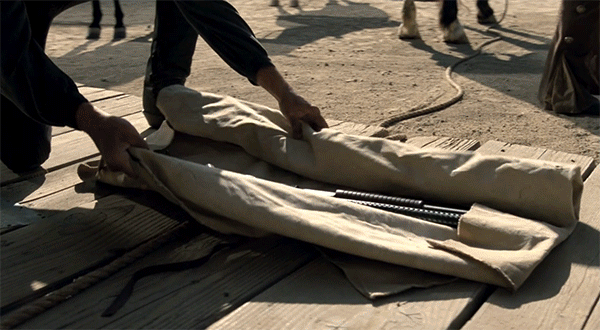
Sanada re-watched and “mimicked” Hectors movements and choreography as best he could. “They used the same music for my entrance and when I saw the screener I thought, Oh my gosh, Im in the Westworld.”
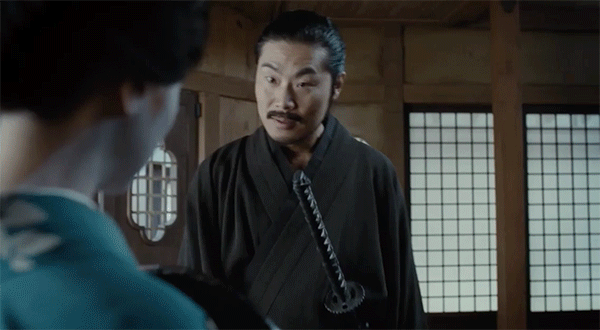
The heist wasnt the only repeated moment. Maeve watches Akane (Rinko Kikuchi) repeat her story of arrival to “the new world” from Season 1.

That moment where Maeve and Akane tell the end of their story in unison is echoed even further over in Sweetwater as poor Original Clementine murmurs her famous “not much of a rind on you” line along with New Clementine.
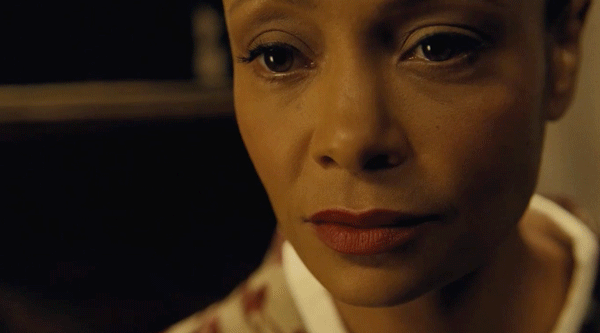
The Mirroring of East and West Is Pure Kurosawa: The way in which Shogun World re-tells some of the story weve seen in Westworld is a reference to the way famed Japanese director Akira Kurosawa borrowed from Western culture and vice versa. “Kurosawa learned from Western movies,” Sanada explains. “He loved John Ford. Then he created, with that idea, his own movie which Hollywood would remake—like Seven Samurai. And again, Kurosawa took an idea from Shakespeare and the Hollywood would remake. So it was a great game of catch between East and West. Its beautiful.”
That call and response between East and West within the episode is perhaps most evocatively used when Maeve offers Akane the freedom of choice that, over in Sweetwater, Dolores denies Teddy.
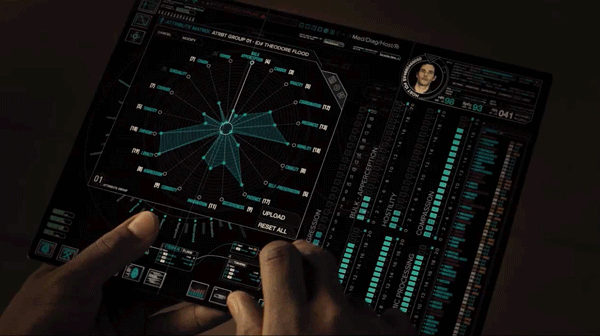
Heres two different versions of the same interaction played out through the Eastern and Western lenses. Akane would prefer to not be awake, Teddy never gets to decide at all.
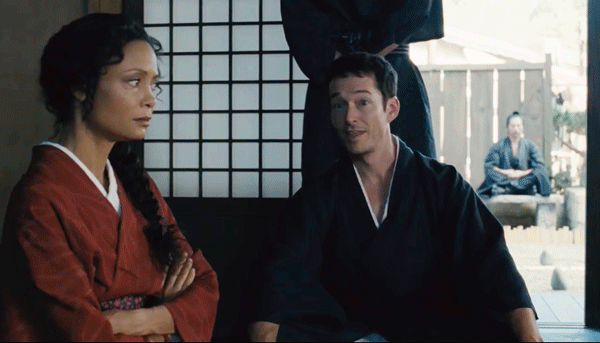
Things Are About to Get Even Gayer: When Armistice meets her double Hanaryo, Sizemore points out that something interesting blossoms between them. Theyre captivated with each other in a way that doesnt read as entirely platonic. Before the season premiere, Evan Rachel Wood told IndieWire about the inclusion of queer love in Season 2: “Well give you something. As a queer person, Im like, More. We will not leave you high and dry. Thats what Im going to say.” Intriguingly, Sanada implies that gay romance may belong to Musashi and Hector rather than Armistice and her double.
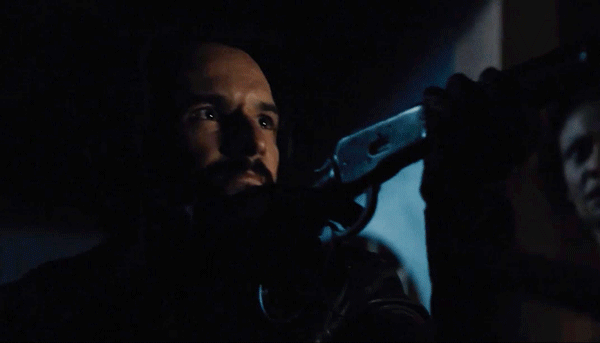
Maeve left the ronin, the gunslinger, and the two tattooed ladies behind when she escaped with Akane, but Sanada says theres more to come. “They hate each other at the beginning, of course, but its gonna be a good arc up to the end of my final episode. Thats the very exciting and dynamic arc, for me, with him. I cannot say a lot but theyre gonna have some chemistry later.” Will it be Armistice and Hanaryo, Musashi and Hector, or Maeve and Akane acting on their fascination? All six?!?! Tune in to find out.
Sanada Isnt Here for Your Lost Comparisons: Both Sanada and his potential future love interest, Rodrigo Santoro, appeared on Lost before they joined the Westworld cast. Its all the rage these days for critics to compare the two shows, but Sanada isnt so sure about that. “Theyre both produced by J.J. Abrams, Im glad to work with him again. But the story, or idea is totally different. [Jonah Nolan and Lisa Joy] have a lot of ideas. They can create more parks—its unlimited. They can create hundreds of parks. Possibly, they can make [the show last] longer than Lost.”
What You Should Watch After “Akane No Mai”: Sanada is overjoyed by the prospect that Westworld viewers might want to follow up their trip to Shogun World with more Japanese cinema. “Especially for the young generations who dont understand the samurai, maybe the ninja, or shogun—whats that? Its gonna be a good chance to re-watch or first-time watch samurai movies from Japan. And then for us, too, if the young generation has an interest in our cultures, theres a big opportunity to create movies with us. Thats why I feel Im carrying a big pressure to make [the episode] better and avoid inaccuracies every day on set.”
But while Sanada appreciates all the talk of Kurosawa, he has some additional influences in mind. “These kind of things, for me, are like an homage to some of my favorite directors. They trained me, they taught me what entertainment is. Kinji Fukasaku [Tora! Tora! Tora!], Kihachi Okamoto [East Meets West], its for them. Im here, Im carrying your dreams, too.”
Get Vanity Fairs HWD NewsletterSign up for essential industry and award news from Hollywood.Joanna RobinsonJoanna Robinson is a Hollywood writer covering TV and film for VanityFair.com.

